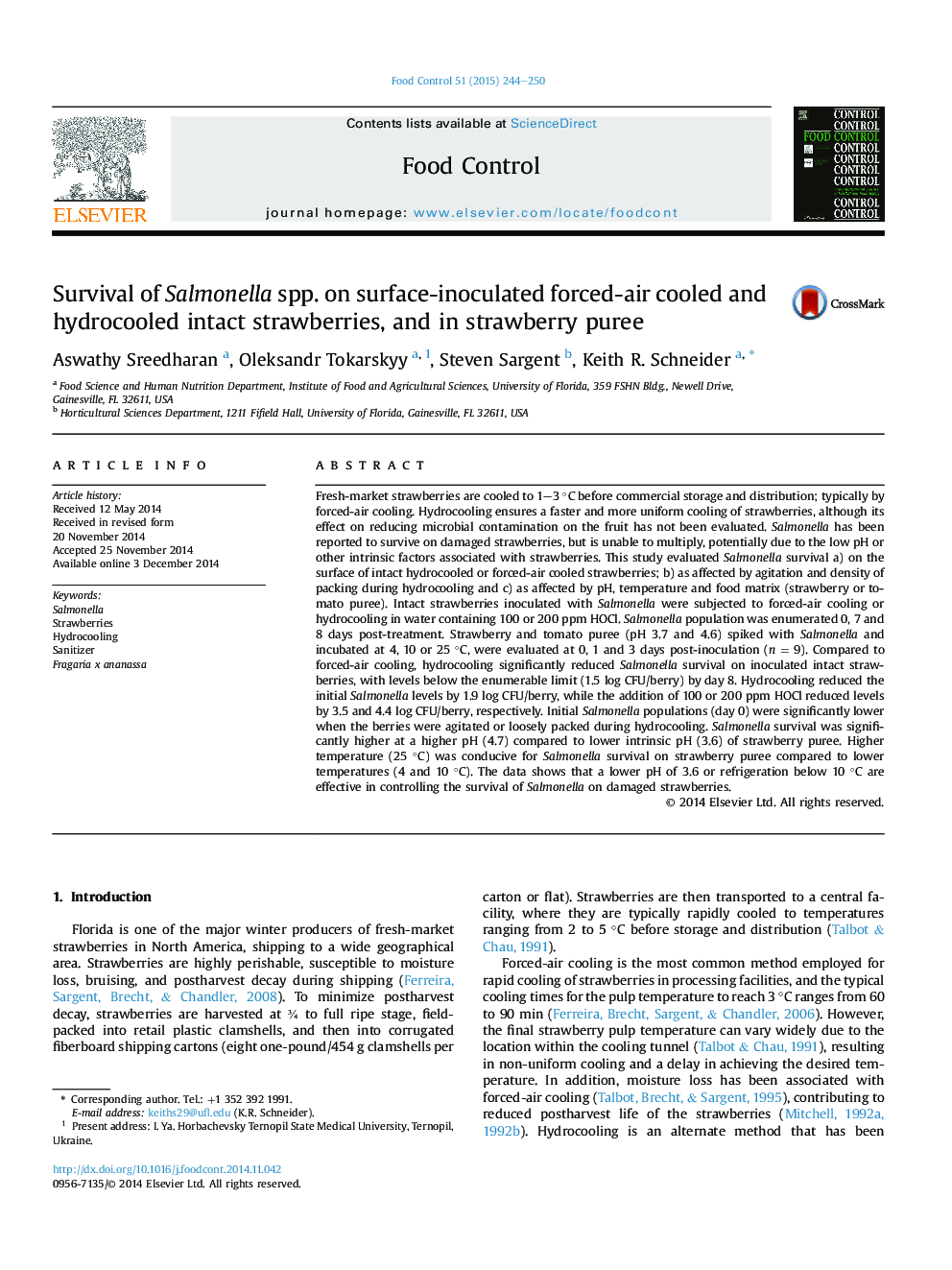| کد مقاله | کد نشریه | سال انتشار | مقاله انگلیسی | نسخه تمام متن |
|---|---|---|---|---|
| 6391061 | 1628411 | 2015 | 7 صفحه PDF | دانلود رایگان |
- Salmonella survival on hydro and forced-air cooled strawberries was examined.
- Hydrocooling reduced Salmonella survival compared to forced-air cooling.
- Agitation of strawberries during hydrocooling reduced Salmonella survival.
- Loose packing during hydrocooling resulted in lower Salmonella survival.
- Temperature and pH affected the growth of Salmonella in strawberry puree.
Fresh-market strawberries are cooled to 1-3 °C before commercial storage and distribution; typically by forced-air cooling. Hydrocooling ensures a faster and more uniform cooling of strawberries, although its effect on reducing microbial contamination on the fruit has not been evaluated. Salmonella has been reported to survive on damaged strawberries, but is unable to multiply, potentially due to the low pH or other intrinsic factors associated with strawberries. This study evaluated Salmonella survival a) on the surface of intact hydrocooled or forced-air cooled strawberries; b) as affected by agitation and density of packing during hydrocooling and c) as affected by pH, temperature and food matrix (strawberry or tomato puree). Intact strawberries inoculated with Salmonella were subjected to forced-air cooling or hydrocooling in water containing 100 or 200 ppm HOCl. Salmonella population was enumerated 0, 7 and 8 days post-treatment. Strawberry and tomato puree (pH 3.7 and 4.6) spiked with Salmonella and incubated at 4, 10 or 25 °C, were evaluated at 0, 1 and 3 days post-inoculation (n = 9). Compared to forced-air cooling, hydrocooling significantly reduced Salmonella survival on inoculated intact strawberries, with levels below the enumerable limit (1.5 log CFU/berry) by day 8. Hydrocooling reduced the initial Salmonella levels by 1.9 log CFU/berry, while the addition of 100 or 200 ppm HOCl reduced levels by 3.5 and 4.4 log CFU/berry, respectively. Initial Salmonella populations (day 0) were significantly lower when the berries were agitated or loosely packed during hydrocooling. Salmonella survival was significantly higher at a higher pH (4.7) compared to lower intrinsic pH (3.6) of strawberry puree. Higher temperature (25 °C) was conducive for Salmonella survival on strawberry puree compared to lower temperatures (4 and 10 °C). The data shows that a lower pH of 3.6 or refrigeration below 10 °C are effective in controlling the survival of Salmonella on damaged strawberries.
Journal: Food Control - Volume 51, May 2015, Pages 244-250
